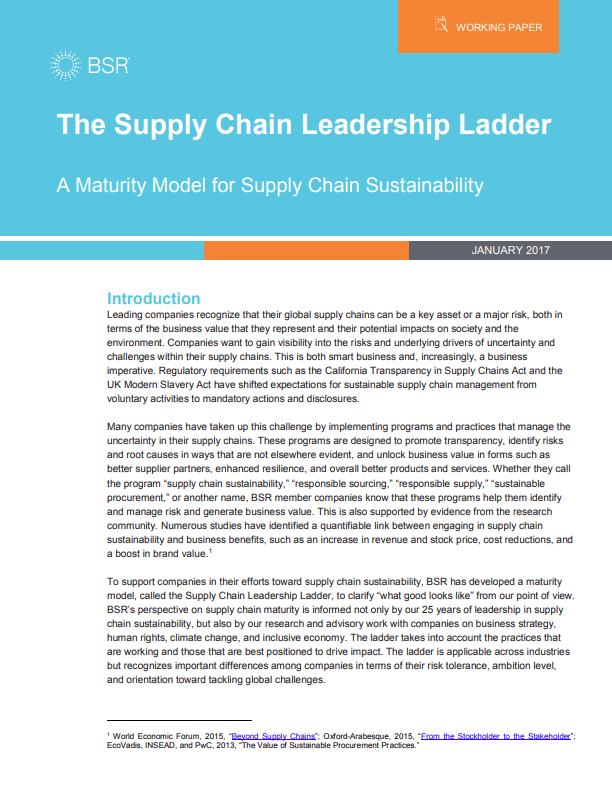Leading companies recognize that their global supply chains can be a key asset or a major risk, both in terms of the business value that they represent and their potential impacts on society and the environment. Companies want to gain visibility into the risks and underlying drivers of uncertainty and challenges within their supply chains. This is both smart business and, increasingly, a business imperative. Regulatory requirements such as the California Transparency in Supply Chains Act and the UK Modern Slavery Act have shifted expectations for sustainable supply chain management from voluntary activities to mandatory actions and disclosures.
Many companies have taken up this challenge by implementing programs and practices that manage the uncertainty in their supply chains. These programs are designed to promote transparency, identify risks and root causes in ways that are not elsewhere evident, and unlock business value in forms such as better supplier partners, enhanced resilience, and overall better products and services. Whether they call the program “supply chain sustainability,” “responsible sourcing,” “responsible supply,” “sustainable procurement,” or another name, BSR member companies know that these programs help them identify and manage risk and generate business value. This is also supported by evidence from the research community. Numerous studies have identified a quantifiable link between engaging in supply chain sustainability and business benefits, such as an increase in revenue and stock price, cost reductions, and a boost in brand value.
To support companies in their efforts toward supply chain sustainability, BSR has developed a maturity model, called the Supply Chain Leadership Ladder, to clarify “what good looks like” from our point of view. BSR’s perspective on supply chain maturity is informed not only by our 25 years of leadership in supply chain sustainability, but also by our research and advisory work with companies on business strategy, human rights, climate change, and inclusive economy. The ladder takes into account the practices that are working and those that are best positioned to drive impact. The ladder is applicable across industries but recognizes important differences among companies in terms of their risk tolerance, ambition level, and orientation toward tackling global challenges.

